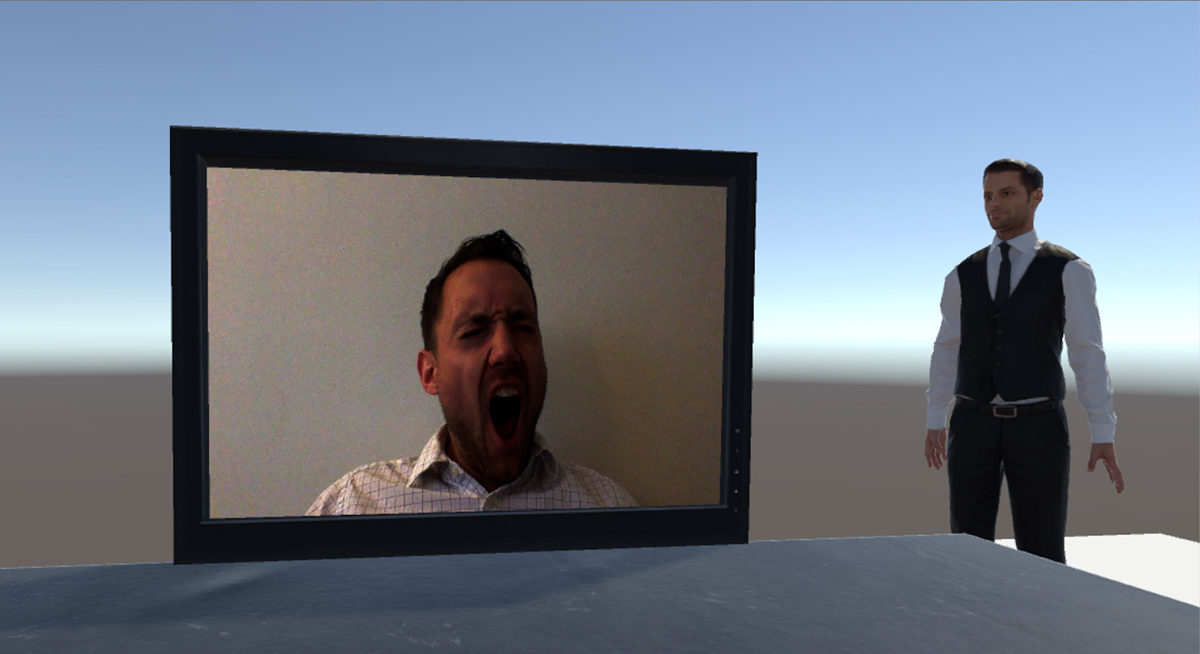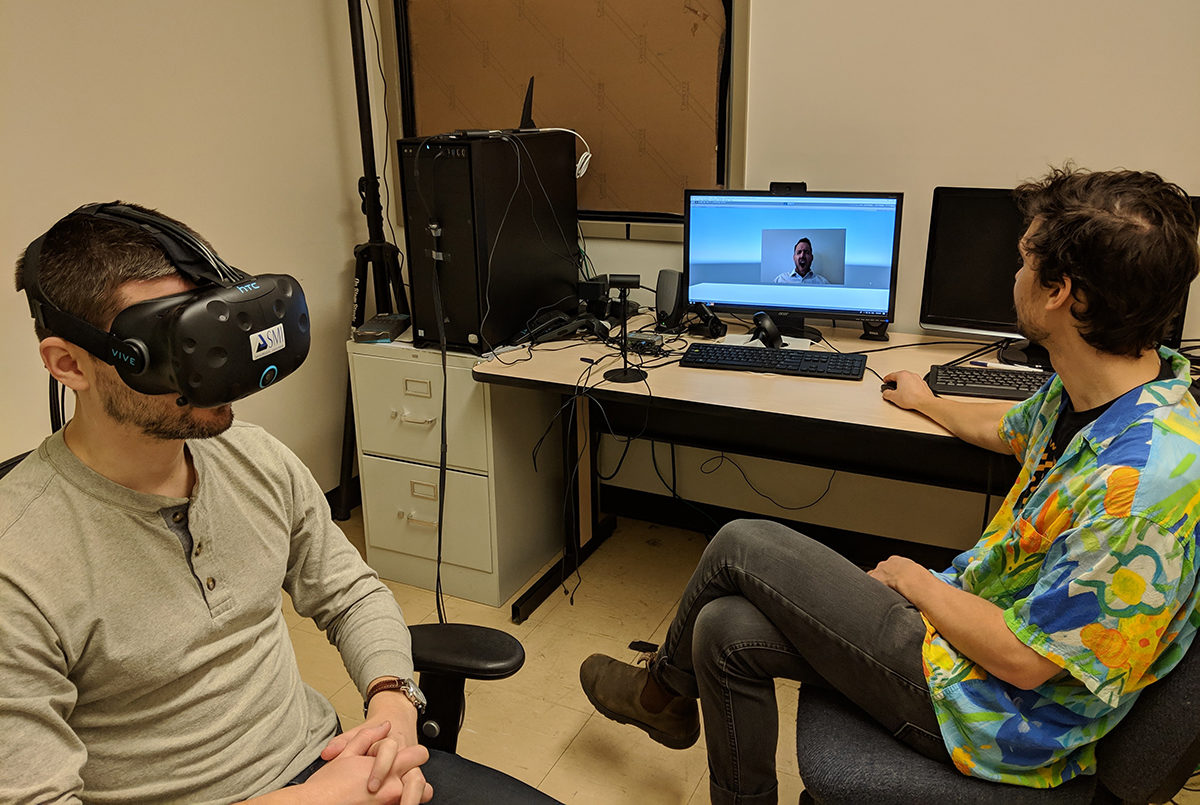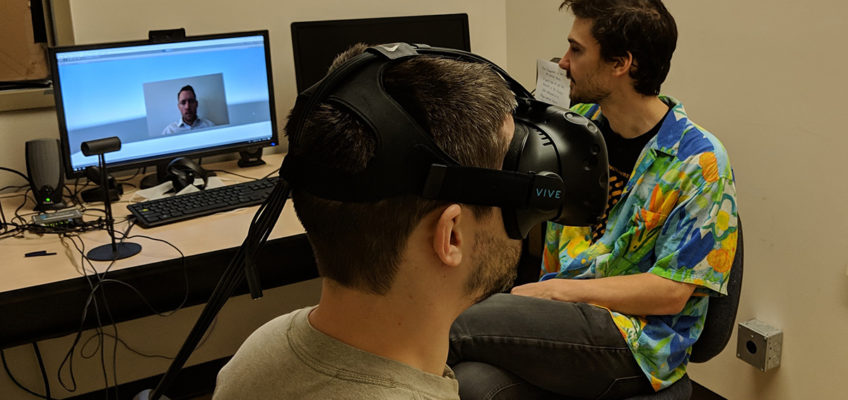New research by the University of British Columbia highlights both similarities and differences in the way people interact in virtual environments and the real world.
Contagious yawning is a well-documented phenomenon in which people – and even some non-human animals – yawn reflexively when they detect a nearby yawn. Another aspect of this is that when people are in company, the presence of others also causes most of us supress that reflex (or at least try to).
The presence of an actual person in the testing room had a more significant effect on yawning than anything in the VR environment Share on X
So when studying the psychological effects of being immersed and interacting with others in Virtual Reality, researchers at the University of British Columbia decided to use yawning patterns as a benchmark to compare people’s behaviours in real-world face-to-face interactions as opposed to VR. And as often happens with such research – specially in what is still a relatively new field – the results were mixed and somewhat surprising.
To instigate contagious yawning in a VR environment, the team from UBC, along with Andrew Gallup from State University of New York Polytechnic Institute, had test subjects wear an immersive headset and exposed them to videos of people yawning. In those conditions, the rate of contagious yawning was 38 per cent, which is in line with the typical real-life rate of 30-60 per cent.
Researchers at the University of British Columbia decided to use yawning patterns as a benchmark to compare people’s behaviours in real-world face-to-face interactions as opposed to VR Share on X If the gap between VR and real life could be closed, scientists would be able to examine the link between the brain, behaviour, and the human experience in both actual reality and altered realities Share on XHowever, when the researchers introduced social presence in the virtual environment, they were surprised to find it actually had limited impact on subjects’ yawning. Subjects yawned at the same rate, even while being watched by a virtual human avatar or a virtual webcam. It was an interesting paradox: stimuli that trigger contagious yawns in real life did the same in virtual reality, but stimuli that suppress yawns in real life did not.
The presence of an actual person in the testing room had a more significant effect on yawning than anything in the VR environment. Even though subjects couldn’t see or hear their company, just knowing a researcher was present was enough to diminish their yawning. Social cues in actual reality therefore appeared to dominate and supersede those in virtual reality.
“People expect VR experiences to mimic actual reality and thus induce similar forms of thought and behaviour,” said Alan Kingstone, a professor in UBC’s department of psychology and the study’s senior author. “This study shows that there’s a big separation between being in the real world, and being in a VR world.”
Which is not really surprising, as we’re of course consciously aware that what we experience in Virtual Reality is different and separate from our experience of reality itself. However, there have also been numerous studies that show how psychological effects experienced virtually do carry on to our off-world behaviour.
Yet as VR becomes an increasingly popular research tool in psychology and other fields, these findings show that researchers also need to account for its limitations, the study concludes.
When the researchers introduced social presence in the virtual environment, they were surprised to find it actually had limited impact on subjects’ yawning Share on X
“Using VR to examine how people think and behave in real life may very well lead to conclusions that are fundamentally wrong. This has profound implications for people who hope to use VR to make accurate projections regarding future behaviours,” said Kingstone. “For example, predicting how pedestrians will behave when walking amongst driverless cars, or the decisions that pilots will make in an emergency situation. Experiences in VR may be a poor proxy for real life.”
If that gap between VR and real life could be closed, scientists would be able to examine the link between the brain, behaviour, and the human experience in both actual reality and altered realities that span place and time, Kingstone added.
We’re of course consciously aware that what we experience in Virtual Reality is different and separate from our experience of reality itself Share on XScientific research like this is extremely welcome as we continue to navigate our way through these immersive technologies and our effects in our brains, but as is often the case, it leaves us with a lot more questions than answers. For example, would the use of better, more realistic avatars affect the subject’s sense of social engagement with the experience? We know that this aspect of meaningful social interaction is one of the most challenging aspects of developing the technology, which is probably why we haven’t seen a Facebook equivalent in the Social VR space emerge as yet. And all this probably means that we might be seeing a lot more exciting research about yawning in VR…
This article originally appeared on VRScout
As VR becomes an increasingly popular research tool in psychology and other fields, these findings show researchers need to account for Limitations Share on XScientists Use Yawning To Study Social Presence In VR via @alicebonasio https://t.co/0nuI1POFix pic.twitter.com/9Lms2q9s14
— VRScout (@VRScout) January 26, 2019
For companies looking to get into Immersive technologies our VR Consultancy service offers comprehensive support in strategic deployment of Virtual, Augmented and Mixed Reality
Alice Bonasio is a VR Consultant and Tech Trends’ Editor in Chief. She also regularly writes for Fast Company, Ars Technica, Quartz, Wired and others. Connect with her on LinkedIn and follow @alicebonasio on Twitter.









